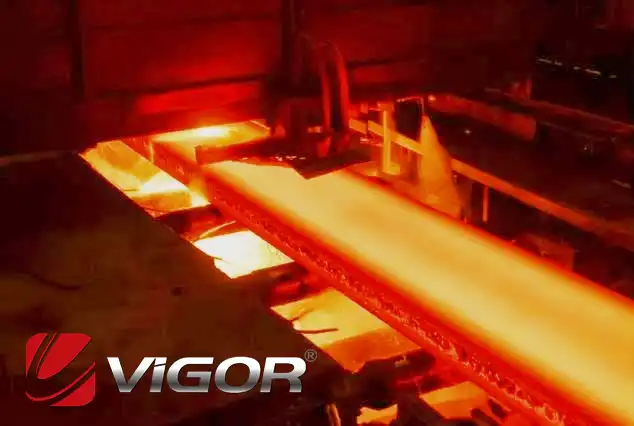
Knowledge
What Is the Step-by-Step Process of Continuous Casting?
The process begins with melting the metal in a furnace, in which alloying and additive stages may occur. The step-by-step process is listed and discussed below:
1. Pour Liquid Alloy Into a Tundish To control the Flow
Transfer the molten metal from the furnace to a tundish. The tundish is the reservoir that holds the charge and regulates the flow into the mold.
2. Direct the Metal Into a Water-Cooled Mold To Partially Solidify and Form a Basic Grid Shape
Pour the metal from the tundish into the throat of the mold. The mold is typically cut from copper or another material with good thermal conductivity. This mold is an open, parallel form that matches the desired cross-section. It can contain internal cores to form hollows in the cast. It is drilled with water-cooling pathways.
As the melt contacts the cooled walls of the mold, solidification commences forming the grid. The cooling effect of the mold extracts heat from the metal, causing it to solidify. In general, a shell of solid metal forms against the mold walls while the core remains liquid for longer.
3. Send the Semi-Solid Grids Through a Strand Guide To Stretch and Cool Them Further
The charge is continuously pulled through the mold by rollers or other mechanical devices called strand guides. These strand guides often stretch the basic grid to improve straightness and dimensional accuracy. The pull rate and fill rate are carefully balanced to produce a consistent and steady finished material flow from the cool end of the tool. Cooling continues as the cast travels through and out of the tool.
4. Pass the Fully Solidified Grids Through Straighteners To Achieve the Final Dimensions
As the grid cools and hardens further, it is passed through straighteners that reduce the kinking that may have developed through non-uniform shape-induced cooling.
5. Wind the Finished Grids Into a Roll for Storage
Product from a strip mill will generally be wound onto a roller to make it compact and easy to store. The cut grid will be racked/stacked and kept straight.
Vigor is home to a mechanical department of exceptional caliber, complete with seasoned engineering experts who bring a wealth of experience from the forging and casting realms. Such deep knowledge enables us to offer products that lead the pack in quality. Our team specializes in offering an array of casting techniques to cater precisely to your requirements. Furthermore, you can expect sagacious advice from our engineers, drawing on their extensive know-how in both design and manufacturing facets.
Those seeking superior casting and forging machinery should not hesitate to reach out. At Vigor, we are dedicated to providing you with not just the highest standard of products but also comprehensive technical support that is simply unmatched.




